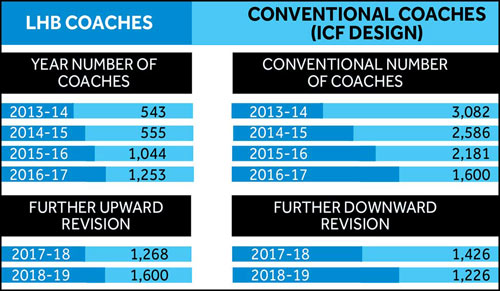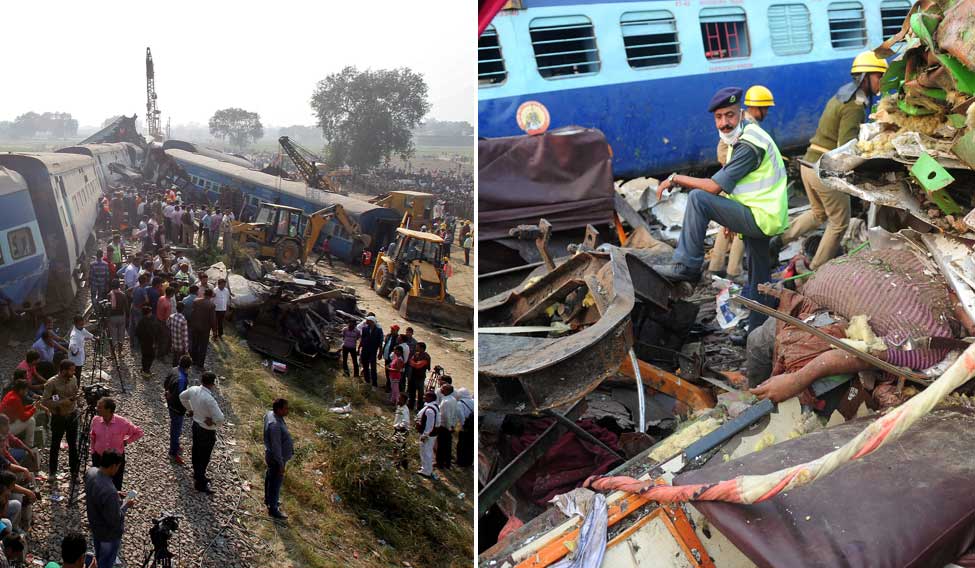On the morning of Nov-ember 20, Prime Minister Narendra Modi was listening to lofty presentations by railway officials. One of the suggestions that drew the prime minister’s attention was to stop blaming ‘human error’ for every train accident or derailment. The railway ministry suggested setting up an agency along the lines of the US government’s national transportation safety board, to act as a specialised investigation task force with capabilities to undertake forensic analysis and scenario modeling, and determine the probable causes of railway accidents.
The government felt that out of the box solutions were necessary. Serious railway accidents had so far been inquiried into by the Commission of Railway Safety, a high-level, statutory body. But, probe results had not been delivered in a manner that could avert future tragedies. ‘Human error’ had become the scapegoat.
Neither Modi, who spent nearly two hours at the Rail Vikas Shivir, nor the railway top brass realised that the time for brainstorming was getting over and the time for action would come soon. Too soon.
Incidentally, this was the first time a Rail Vikas Shivir had been organised involving all railway employees for brainstorming and planning. They had gathered on the outskirts of the national capital for the three-day mega event. On the last day of the event, news broke of the Indore-Patna Express derailing near Kanpur in Uttar Pradesh, wrecking most of the coaches and claiming at least 146 lives.
The prime minister’s parting words to the railway officials had been to implement foolproof systems in railways to reach “zero-accidents”. Railway Minister Suresh Prabhu said the guilty will not be spared. The government has begun exploring options for roping in an independent agency like the CBI to investigate the tragedy. The CBI has the mandate to probe such cases; it had probed the Jnaneswari Express derailment in 2010.

Successive governments have overlooked core issues and implemented cosmetic changes, lured by vote-bank politics. “Today the biggest problem of the Railways is departmentalism. What used to be the strength of the Railways has become its weakness. People who are specialists in their fields like engineering, safety, mechanical and so on are working in silos. Then there are divisional railway managers and general managers, where politicking has become a norm,”said a railway ministry official who refused to be named. “The result is that whenever there is an error or an accident, those handling the coach will blame it on the track, and both of them will blame mechanics. The issue remains unaddressed.”
For a heavy infrastructure industry like the Railways, this can spell doom as it requires the focussed attention of all departments to ensure passenger safety. The poor financial health of the Railways and misuse of its huge manpower add to its woes.
The result is tragedies like these. When the Kalka-Shimla narrow gauge section, a UNESCO heritage track, witnessed a derailment that killed two British tourists in 2015, the track and coach blame game dominated the discussions. The end result, railway ministry officials confess, is that the line is running under capacity today, at times lying idle.
The core issues have not been addressed till date. Today, the railway ministry is upbeat about having implemented some of the recommendations of a high-level safety review committee under the chairmanship of Anil Kakodkar, which gave its report in 2012. It is also thumping itself on the back for speeding up the process of replacing the decades old conventional coaches (ICF design, built in the Integral Coach Factory in Perambur, Chennai) with the safer and shock absorbent LHB (Linke Hoffman Busch) coaches which do not pile when breaks are applied suddenly. But, the government statistics give a reality check (see infograph).
“The lifespan of a coach is 25 to 30 years. While the downward revision of producing conventional coaches has begun, it is also a fact that they continue to be manufactured. Once a coach is on wheels, it will complete its life span. So, it is not possible that all conventional coaches can be phased out in the next few years,”confessed a railway official. From number juggling for meeting targets, to making a real difference on the ground, the issue may need a little more attention, like many others.







